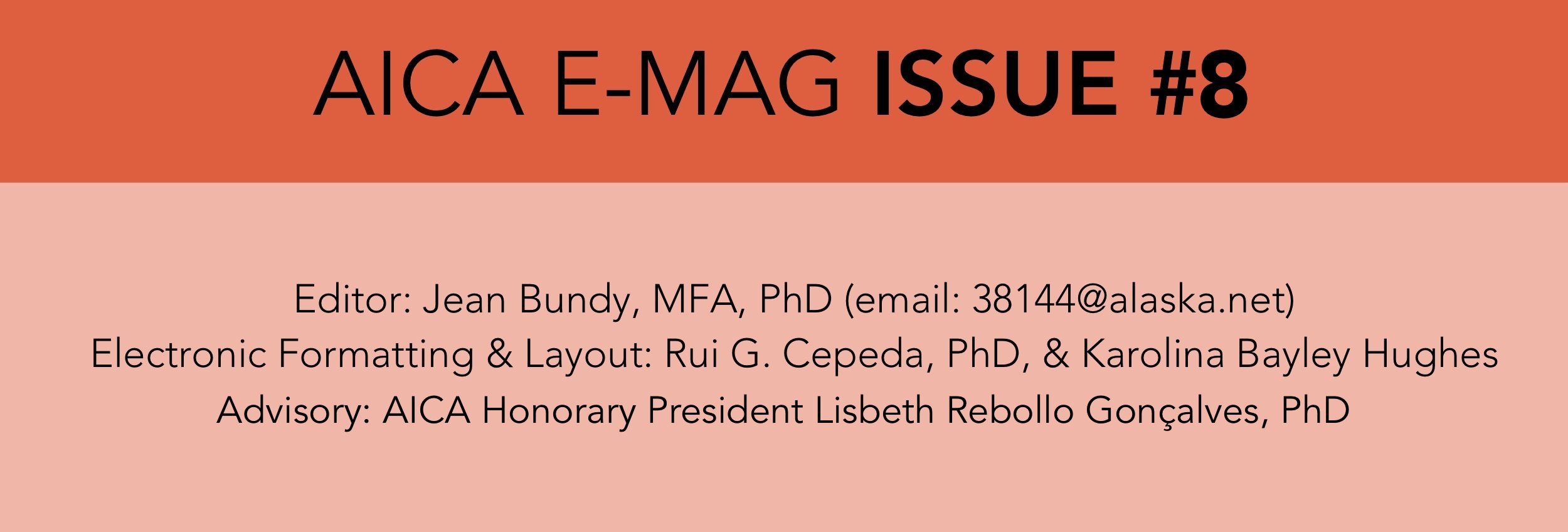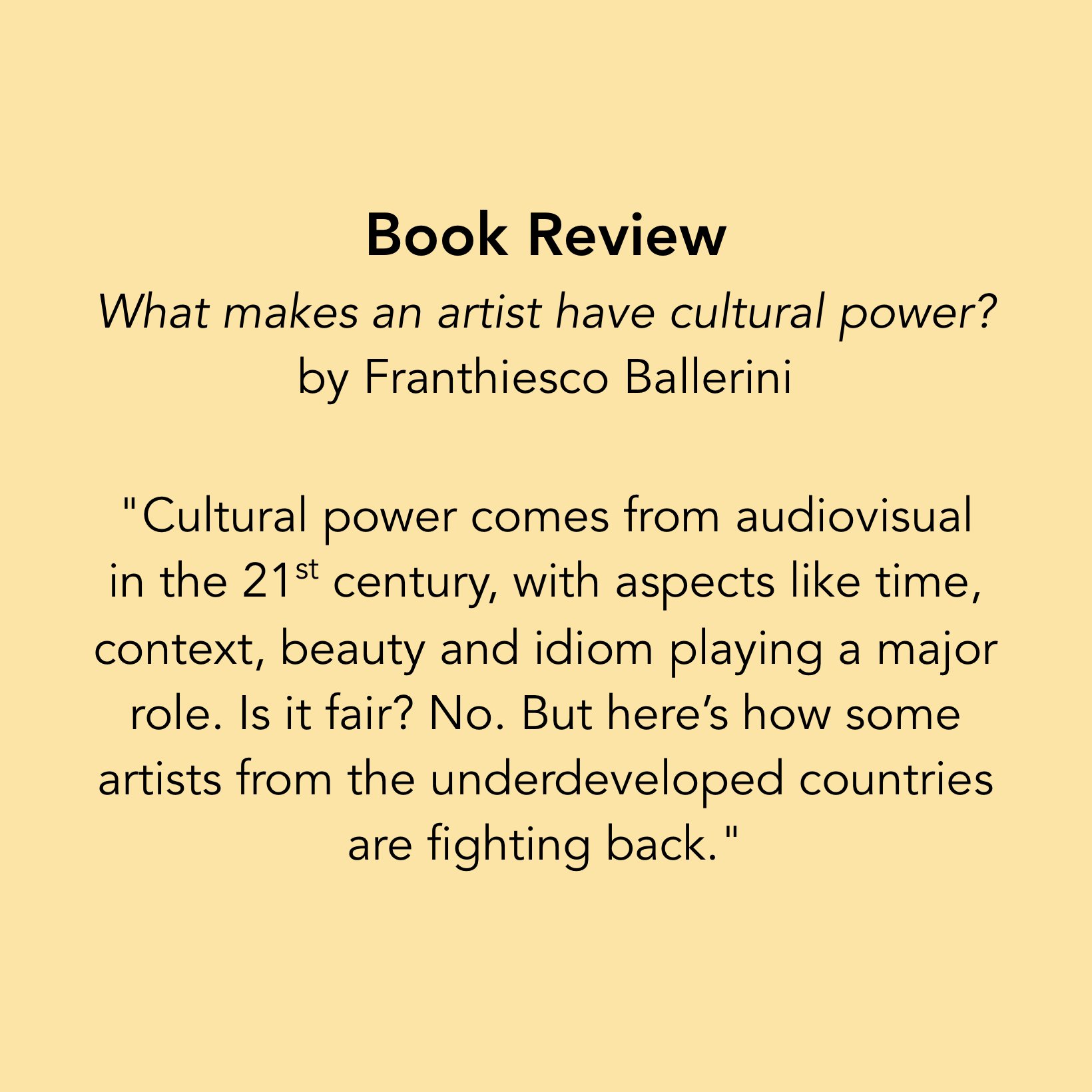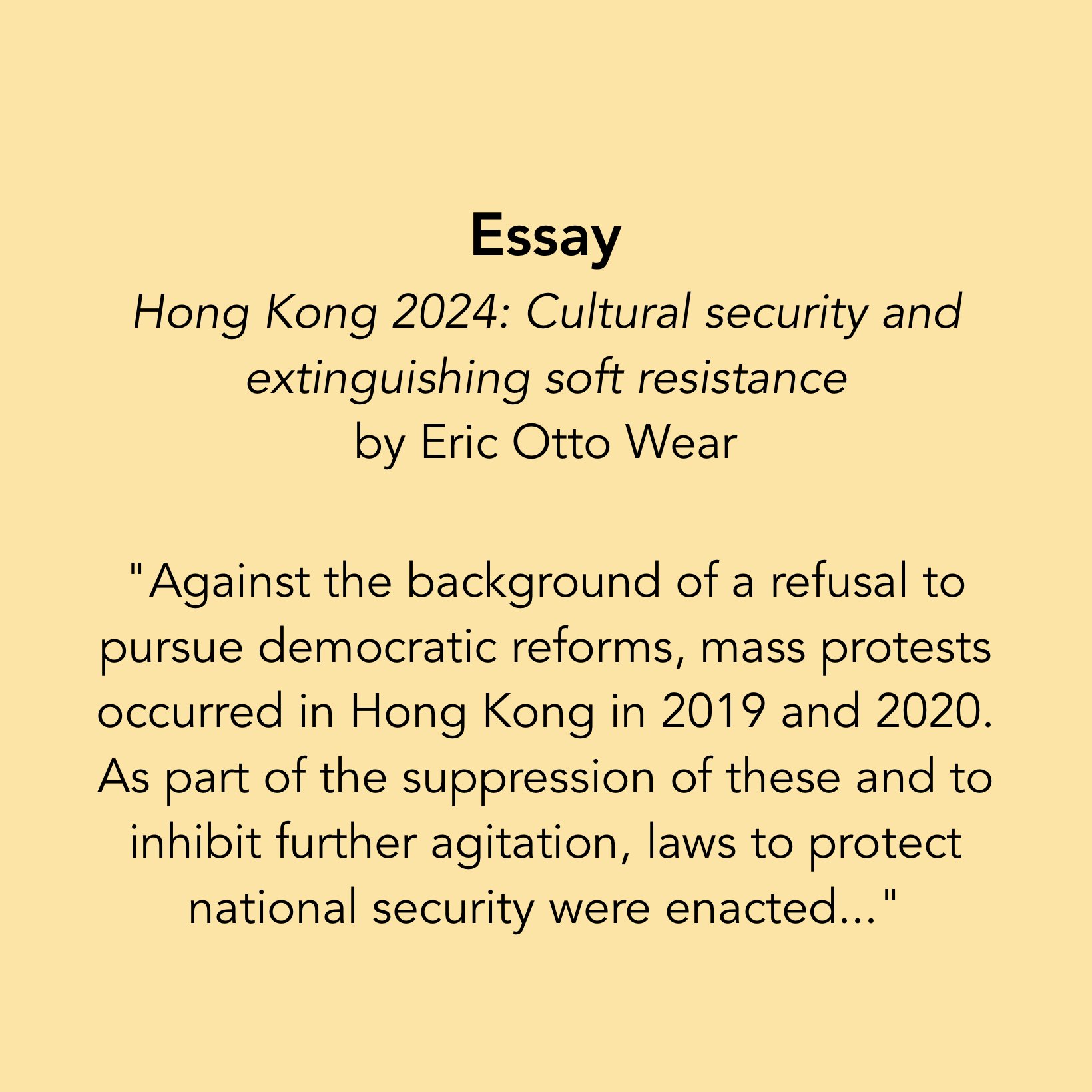Franthiesco Ballerini’s -- What makes an artist have cultural power? references his recent book—‘Poder Cultural (Cultural Power)’ explaining, “It’s the individual ability to seduce a massive amount of people from all over the world, moving other countries economy, shaping consumer habits and creating an industry of its own.” Ana Lúcia Beck’s -- When macaws silence, is a delightful musing about relocating to Goiânia, while retaining memories, some aesthetic, of Rio Grande do Sul, as metaphorically surmised through noises of macaws out her window. Jean Bundy’s -- Aesthetic Venice Through--Sargent, Whistler & Venetian Glass, American Artists and the Magic of Murano depicts the art/crafts revival after Italian unification, which becomes enlightening before going to the 60th Venice Biennale. Sandra Hitner’s -- POPE FRANCIS’ VISIT TO VENICE, with a soupçon of Derrida, expands the 60th Venice Biennale’s theme of ‘Foreigners Everywhere’ writing about the Vatican’s Pavilion in the Giudecca Island Women’s Penitentiary, where curators collaborated with prisoners who become the ‘other’ foreigners. Eero Karjalainen’s -- When I say forest, what do you see? Slowness of reflection and reflection of slowness in the work of Amar Kanwar, is relevant, as this summer’s temperatures worldwide increase. Eric Otto Wear’s -- Hong Kong 2024: Cultural security and extinguishing soft resistance, is summed up here. “Among artists, prudence now replaces risk-taking, often encouraged by concerned friends and family, while curators and critics practice collective self-censorship, steering each other away from politics and social criticism;” revealing that Hong Kong’s paradoxes persist.







